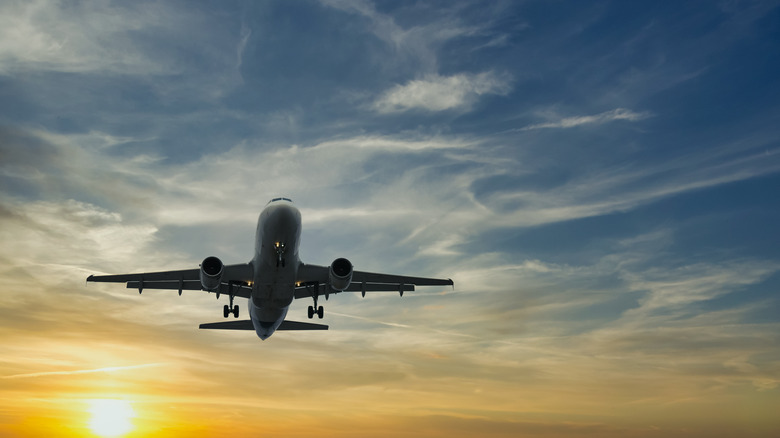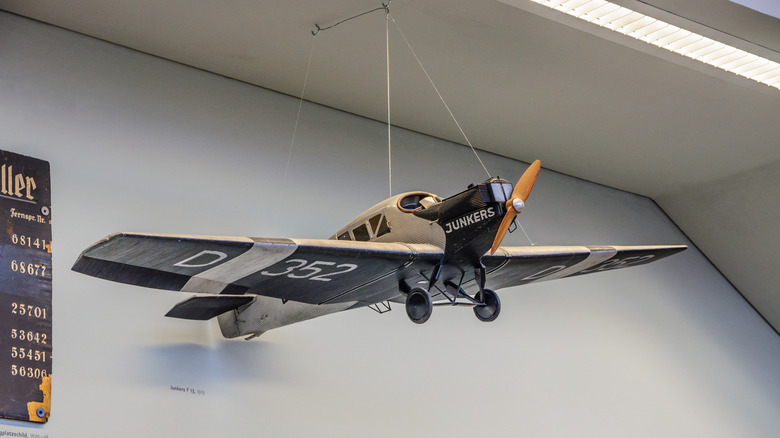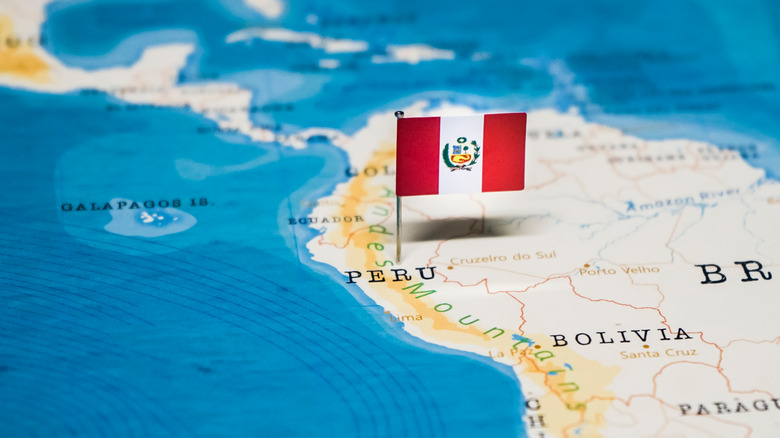The First Known Airplane Hijackings Were Earlier Than You Think
When Americans think of hijacking aircraft, their minds are almost certainly going to go to the events of September 11, 2001, during which terrorists carried out a coordinated series of hijacking of four aircraft with the intent of flying them into targets (one hijacking failed). However, the hijacking of aircraft actually goes back to the earliest days of the technology, depending on how you define certain terms. This sparked a century of using the hijacking of aircraft as tools of warfare, insurrection, terrorism, and in one memorable case, as a part of an exceptionally-elaborate heist that still remains a mystery half a century after it took place (via Smithsonian). Then along came the Cold War, during which hijacking of aircraft was an almost-daily occurrence; according to Vox, there were 130 hijackings in the four years between 1968 and 1972
Hijackings are considerably rarer these days, in the wake of more security features invoked following the events of September 11. Nevertheless, hijacking of airplanes still continues; according to Statista, the most-recent airplane hijacking with a plane full of passengers (as of December 5, 2022) took place in the skies over Belarus in 2021.
The First Hijacking (Maybe): 1919
Pinpointing the very first airplane hijacking is going to be difficult, for a couple of reasons, the first and most important of which is the very definition of hijacking itself (the second being the fact that there may have been hijackings that history didn't record). If we define a hijacking as a passenger (or stowaway) on a commercial aircraft taking over the flight controls, then we have to point to a 1931 incident (more on that later). However, if we loosen the definition a bit to include a plane being, for lack of a better choice of words, stolen, then we need to go back over a decade to 1919.
As Smithsonian reports, Baron Franz Nopcsa von Felso-Szilvas was an Austro-Hungarian aristocrat who traveled around the world raising hell and taking notes, in the process discovering dinosaurs and dying penniless. At one point in 1919, according to The Knowledge, he tried and failed to have himself installed as king of Albania and attempted to flee town with his lover. According to Skift, he stole a plane at gunpoint in Budapest, although what happened afterward remains unclear.
The First Hijacking (Maybe): 1929
The second possible first hijacking of an airplane, like that of Baron Franz Nopcsa von Felso-Szilvas, also falls apart when compared to the textbook definition of plane hijacking. It's also unconfirmed, as the victim failed to properly document everything that supposedly went down.
As Social Laws Today reports, a man named Howard "Doc" DeCelles claimed that in December 1929, he was flying for Transports Areas Transcontinental, flying Mexican mail from San Lusi Potosi to Torreon, with a view towards going on to Guadalajara, when he got a message over the radio. A man identifying himself as Saturnino Cedillo, the governor of the state of San Luis Potosi, and several other men, told him through an interpreter that he would have to divert the craft. Feeling he had no choice, he did as he was instructed. He also claimed that he was held captive for several hours before being set free.
Unfortunately for historians, this event remains unconfirmed due to a lack of documentation, and the record for the first confirmed hijacking of a plane would have to wait a couple of years.
The First Confirmed Hijacking: 1931
According to Smithsonian, the first confirmed hijacking of a commercial aircraft took place in 1931, although again, it doesn't fit the textbook definition of a hijacking, which requires a passenger or stowaway on the aircraft taking it over. However, it was done for political means, and specific political means at that. Pilot Byron Rickards was on the ground in his plane, described by AirDisaster as a Panagra Ford Tri-motor, when he was approached by armed revolutionaries. The timing of the event is in dispute; while Smithsonian reports that he was ordered to fly to Lima, AirDisaster reports that he had left Lima and had landed in Arequipa. In either event, armed soldiers surrounded the airplane and demanded that Rickards fly them wherever they wanted so that they could drop leaflets containing the group's propaganda. Rickards refused, and after 10 days, the standoff ended, and he was released.
Note that in Rickards' case, as well as in the case of Howard DeCelles and Baron Franz Nopcsa von Felso-Szilvas, the aircraft were on the ground when they were seized. The business of hijacking aircraft already in the air didn't really get going in earnest until the Cold War, and for a few decades, these hijackings were so commonplace that airlines were eventually forced to enact security measures.
The Cold War: The Golden Age Of Airplane Hijacking
The "Golden Age" of airplane hijacking coincides with the Cold War, and we're using the term "Golden Age" here because, for a few decades, hijacking of aircraft was literally almost an everyday occurrence; as Smithsonian reports, for a time in the late 1960s to early 1970s, there was, on average, one airplane hijacking every five days. The first hijackings of planes by passengers probably started taking place in the late 1940s. Getting out of the Soviet Union or any of its Communist Bloc partners was, in those days, difficult at best, and some defectors took to hijacking aircraft as a way to get to freedom. Usually, Western governments gave them political asylum rather than prosecuting them.
The effects of the Cold War weren't limited to Europe, however. By the 1960s, the U.S. embargo against Cuba meant that people in the U.S. couldn't go to Cuba (or vice-versa) without cutting through reams of red tape. That precipitated a spate of hijackings of U.S. airliners, largely Cubans trying to get back to the country. Such hijackings largely went down without violence, but by the late 1960s, the Palestine Liberation Organization (PLO) got in on the act, and their hijackings were anything but peaceful. And then in 1971, there was the case of D.B. Cooper, who hijacked a plane in an elaborate plot to steal $200,000 and escape, via parachute, into the night sky (per Smithsonian). The airline industry was fed up and started invoking security measures, such as metal detectors.
September 11 Changes Everything
By the early 1970s, hijacking aircraft had become a federal crime in the United States, and airlines started using metal detectors as a deterrent (per Smithsonian). Those protocols worked reasonably well, except when they didn't, and the failure of those deterrents became apparent on September 11, 2001.
In the post-9/11 era, air passengers worldwide must go through exhaustive security screenings — including metal detectors, X-ray machines, bomb-sniffing dogs, and a host of other measures — in order to get anywhere near an aircraft. As IBM notes, however, those measures aren't foolproof, and although aircraft hijacking is no longer the everyday (so to speak) occurrence that it was two generations ago, hijacking still takes place. In an ugly 2021 incident, a plane flying from Athens to Vilnius was diverted to Minsk, Belarus, after a bomb threat (via Politico). It would later come out that the Belarusian government was (probably) behind it in an effort to get the plane on the ground so that two dissidents could be arrested. However, this incident involved people on the ground and not on the aircraft.
In September 2022, a Mississippi man stole an aircraft that was on the ground, threatened to crash it into a Walmart, flew around for a few hours, and then landed it without incident (per AL.com). Do note that the plane was not in the air when it was stolen, and there were no passengers involved.





